(1) OptionA: Throught ou the course, I have been exposed to more Distributed and Open learning advantages and differences. Among them, Mays’ article A guide to making open textbooks with students, The article “Digital Redlining, Access, and Privacy” by Gilliard and Culik, “Defining OER-enabled Pedagogy.” by Wiley and Hilton, and “Design Principles for Indigenous Learning Spaces.” by Kral and Schwab. Those articles remind me that Open learning is helping to make educational resources more equitable. Make it more affordable, easier to obtain and use for students no matter where they are or their income level. It can also help students develop time management and improve professional skills.
Mays, E. (Ed.). (2017). A guide to making open textbooks with students. Rebus Community.
Gilliard, C., & Culik, H. (2016, May 24). Digital Redlining, Access, and Privacy. Common Sense Education.
Kral, I. & Schwab, R.G. (2012). Chapter 4: Design Principles for Indigenous Learning Spaces. Safe Learning Spaces. Youth, Literacy and New Media in Remote Indigenous Australia. ANU Press. http://doi.org/10.22459/LS.08.2012
Wiley, D. & Hilton, J. (2018). Defining OER-enabled Pedagogy. International Review of Research in Open and Distance Learning, 19(4).
Here are my blog post links:
Topic1: https://louisxian.opened.ca/topic1/
Quote: “Blended learning is the inspiration of much of the innovation, both pedagogically and technologically, in higher education. By innovation we mean significantly rethinking and redesigning approaches to teaching and learning that fully engage learners.” Vaughan, N. D., Garrison, D. R., & Cleveland-Innes, M. (2013).
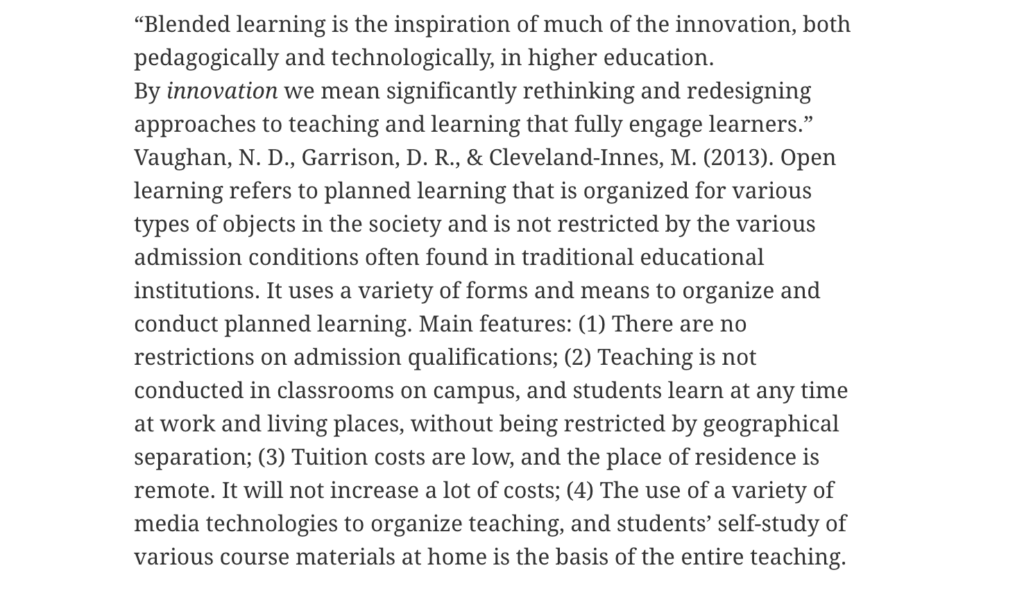
Topic2: https://louisxian.opened.ca/topic-2/
Quotes: We are never truly “teaching naked”. Major, C. H. (2015).

OEP is a well-developed open digital identity. Jordan, K. & Weller, M. (2017).
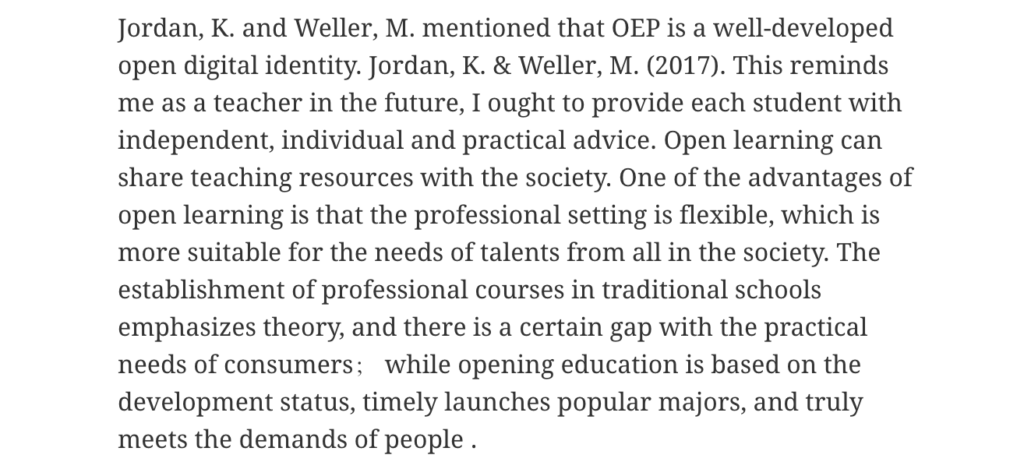
Topic3: https://louisxian.opened.ca/the-new-topic3/
Quote: Open Pedagogy,” as we engage with it, is a site of praxis, a place where theories about learning, teaching, technology, and social justice enter into a conversation with each other and inform the development of educational practices and structures. Mays, E. (Ed.). (2017).
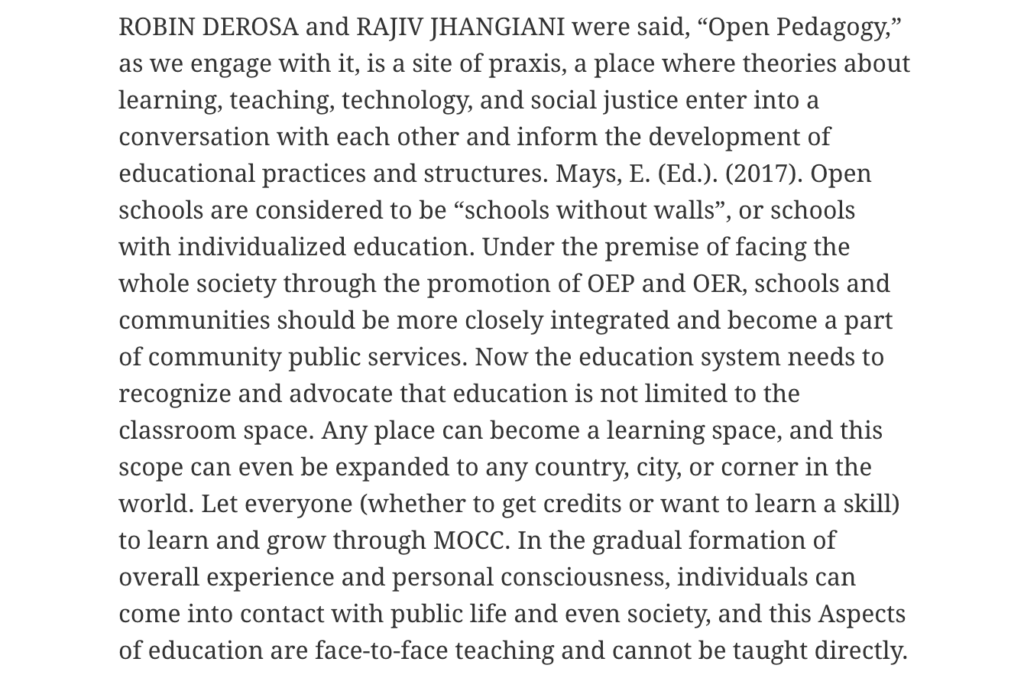
Even though 67% of college students in Florida and 54% of those in British Columbia[14] cannot afford to purchase at least one of their required course textbooks, we more readily attribute their inability to complete assigned readings to laziness and entitlement than to unaffordability. Mays, E. (Ed.). (2017).
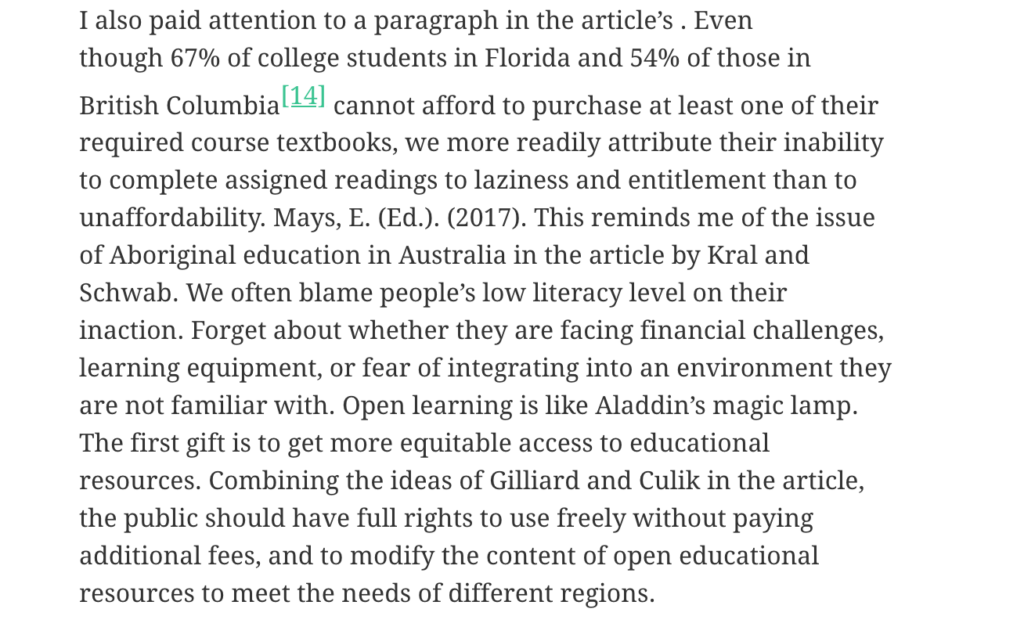
Topic4: https://louisxian.opened.ca/topic-4/
Consequently, when using OER, as opposed to traditionally copyrighted resources, students are free to engage in a broader range of activities and, therefore, to learn in a broader range of ways. The core ideas of OER-enabled pedagogy are in many ways a combination of openness as characterized by the 5Rs and Papert’s (1991) notion of constructionism. Wiley, D. & Hilton, J. (2018).
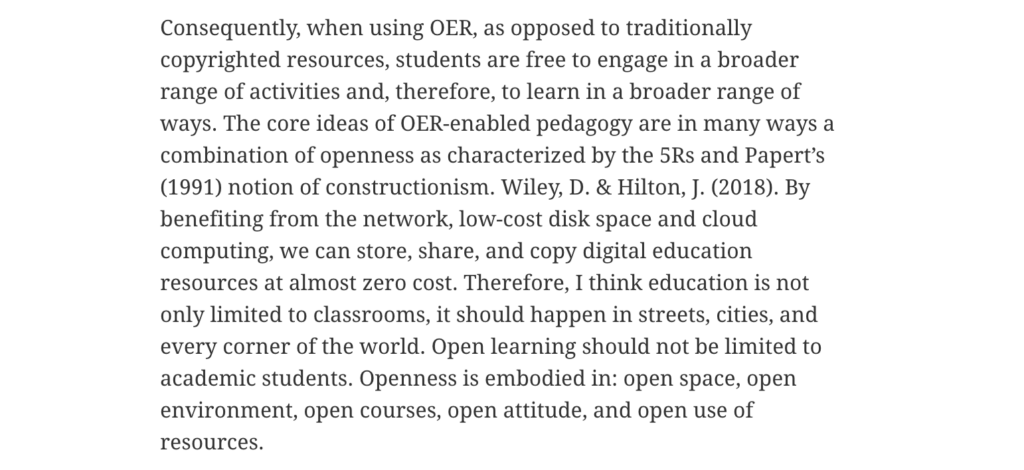
Video Link: https://youtu.be/7hntt2XTijY
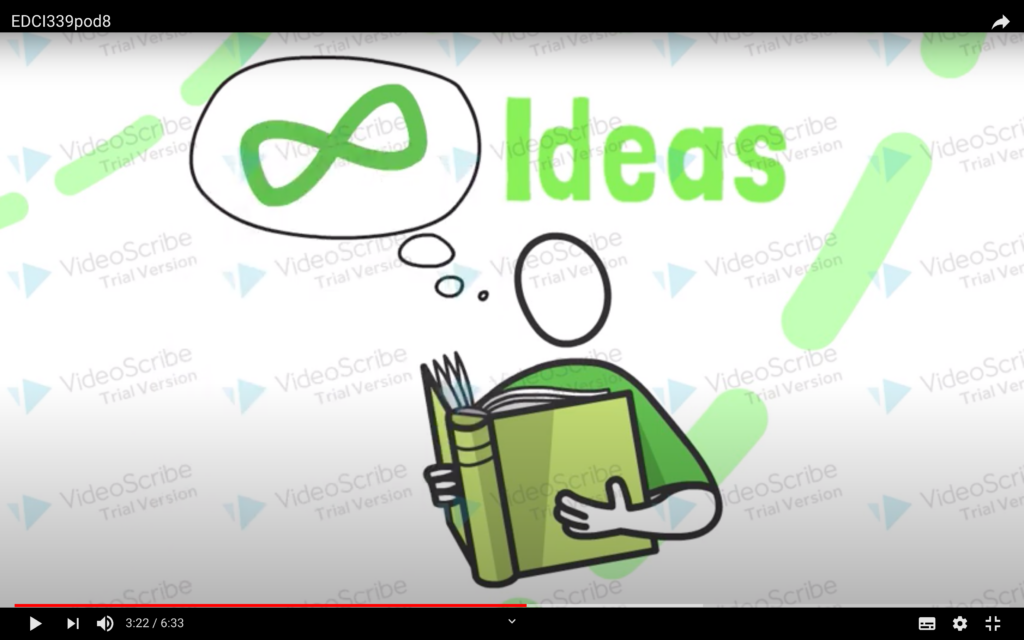
Quote: Open Pedagogy,” as we engage with it, is a site of praxis, a place where theories about learning, teaching, technology, and social justice enter into a conversation with each other and inform the development of educational practices and structures. Mays, E. (Ed.). (2017).
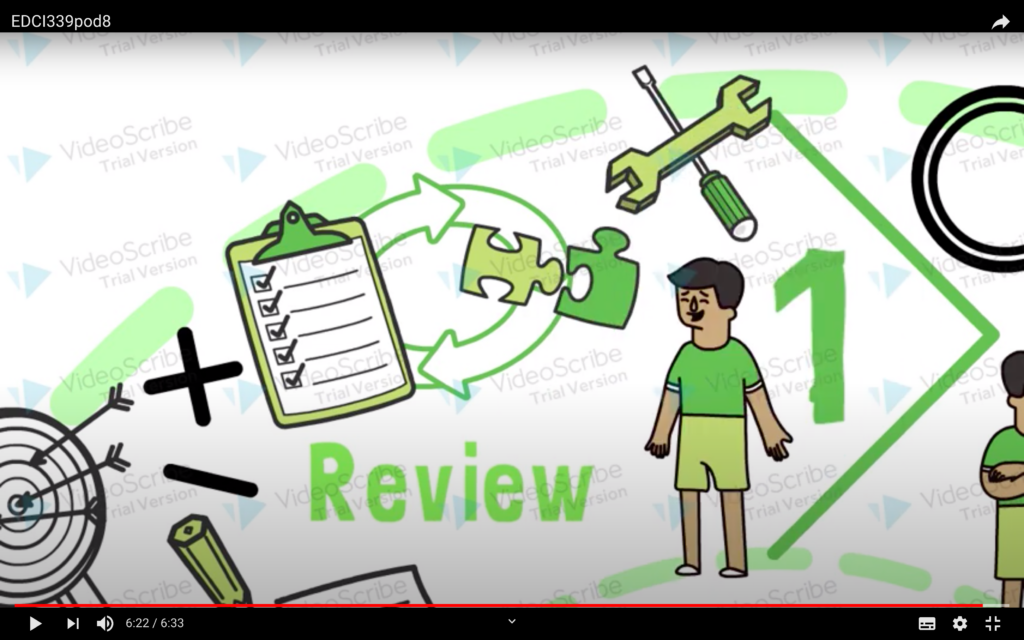
Quotes: We are never truly “teaching naked”. Major, C. H. (2015).
Comments that I received from them:
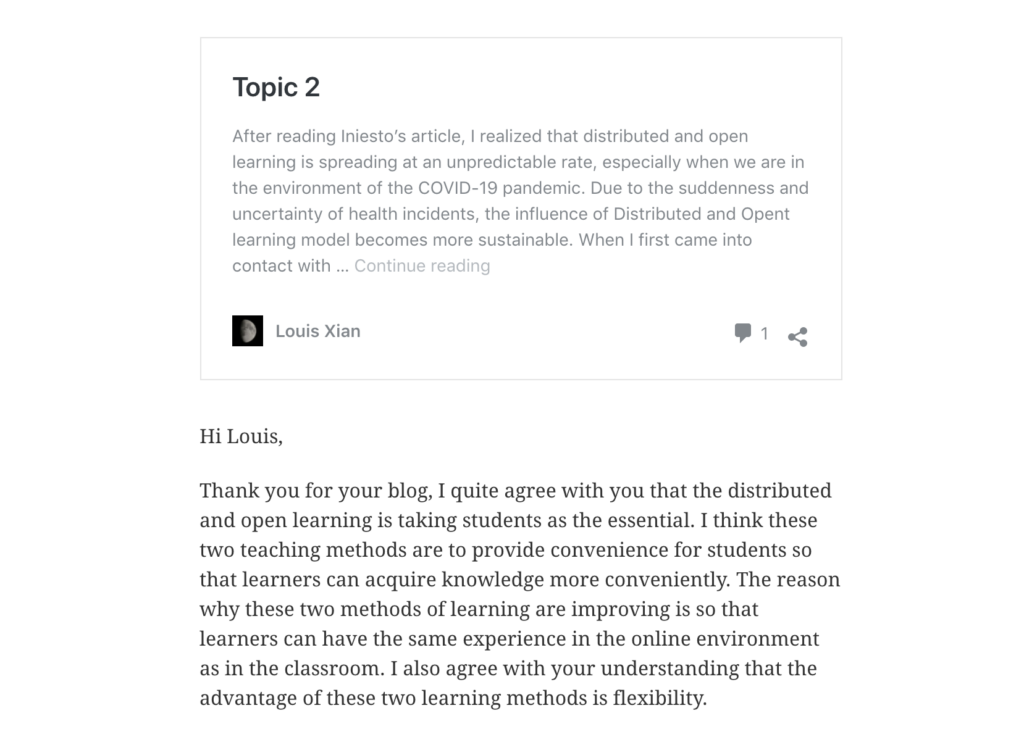
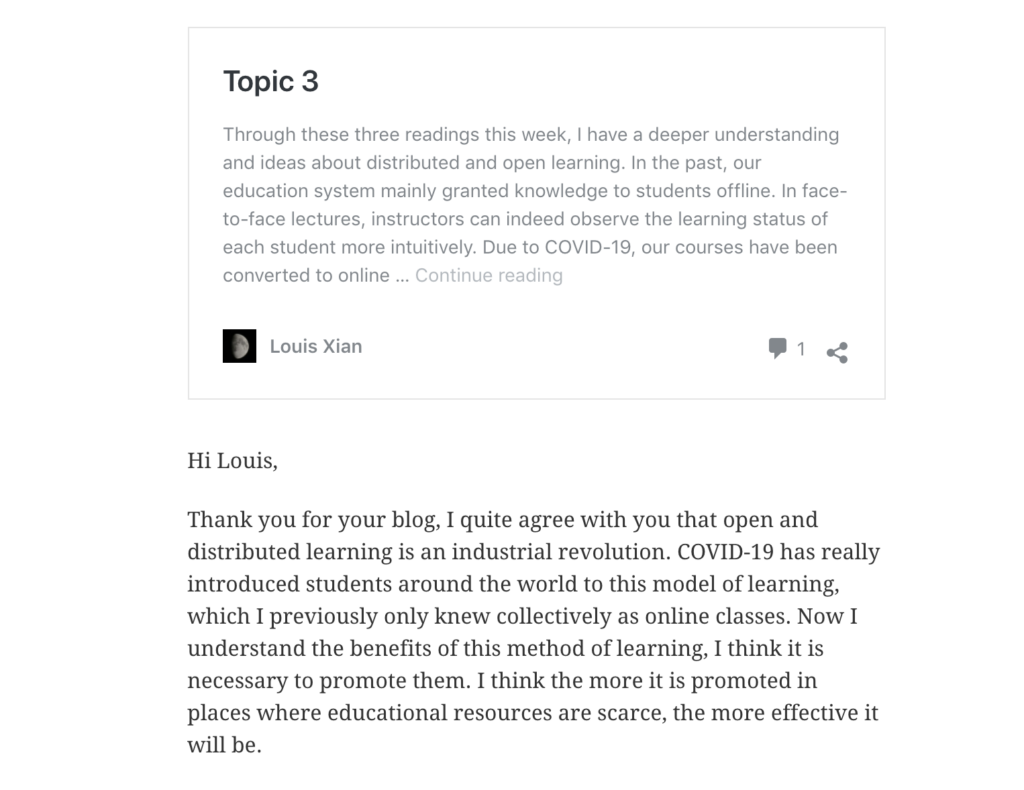
Comments I made:
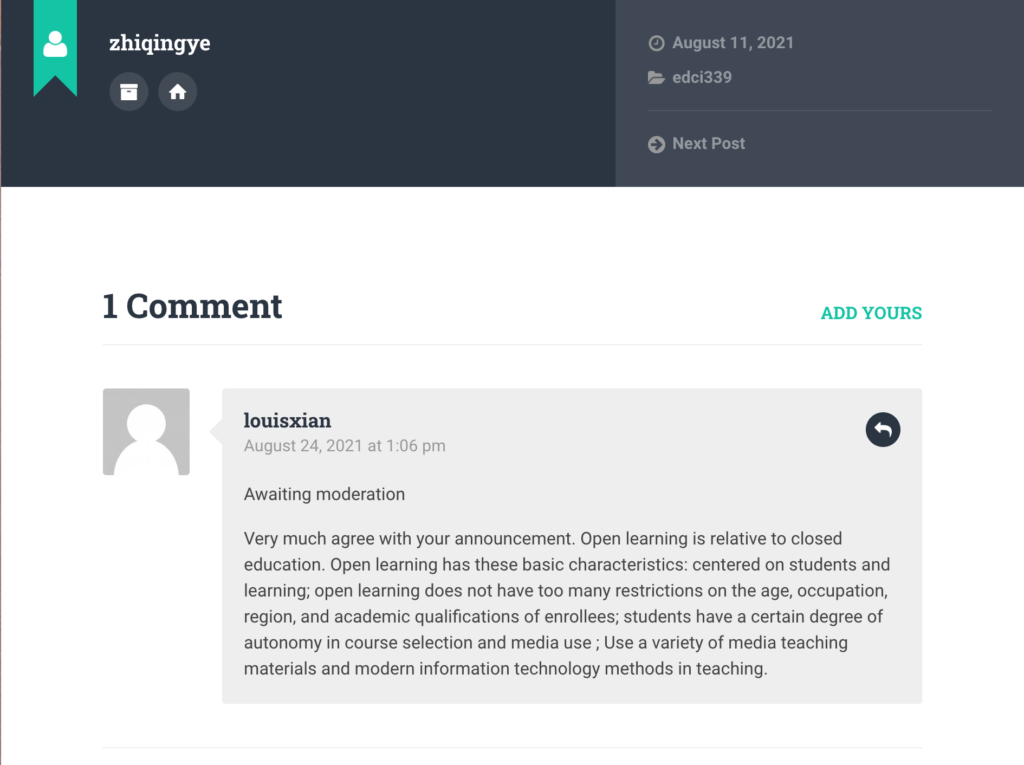
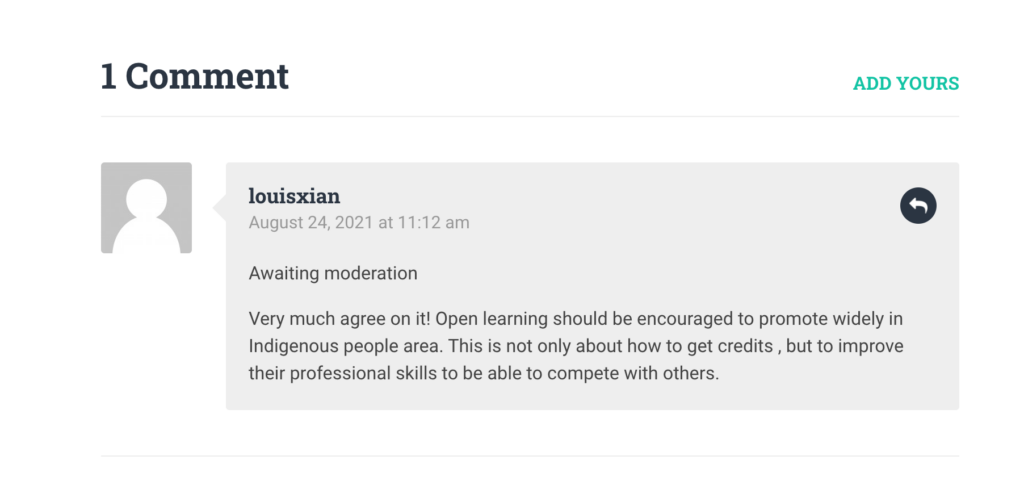
From completing these activities, I learned how to use software to make videos about Distributed and Open learning and the importance of teamwork. The things I learned matter to me because video production can turn some ideas and interesting ideas into applications through programming. An application that can even be used, experienced, and can help many people. And an excellent team can work together to brainstorm, and the level and direction of thinking when encountering problems are different, so that they can get the best solution. Even if a person encounters a problem, even if they meditate hard, it will be difficult to obtain a satisfactory answer. However, if a group of people think about a problem, the effect will definitely be different. Brainstorming is especially popular in a period of time. Different views and solutions are given to the problem, and then all the ideas are combined to finally arrive at the most satisfactory solution. In this process, individuals learn a lot, and effective communication can also bring closer the distance between each other. , It can increase the cohesion of the team.
(2)Updated version of post #3: https://louisxian.opened.ca/the-new-topic3/
Original version of post #3: https://louisxian.opened.ca/topic-3/
The reason why I chose post3 is that after reading one of our team members Zhiqing Ye’s blog post3, she mentioned that distributed and open learning should be widely promoted in the aboriginal area. On the other hand, by repeatedly reading the article Chapter 4: Design Principles for Indigenous Learning Spaces by Kral and Schwab. Gilliard, C., & Culik, H. (2016, May 24). This reminded me that open learning is not only reflected in the fairness of MOOC resources, but also focused on the promotion of indigenous areas. We must pay attention to the national cultural cognition and identity of the indigenous peoples’ professionals to assist the indigenous peoples to build a talent team that is conducive to the independent development of the nation. I want to clarify that Open learning should continue to keep educational resources free and increase promotion. Nowadays, with the maturity and application of 5G, artificial intelligence, cloud computing, big data and other technologies, the form and service form of “Internet + education” are constantly upgrading. The classroom is no longer just a lesson plan, a blackboard, and a piece of chalk. When the big data drive and the intelligent connection mode are combined to form an online course mode, with diversified carrying methods and presentation forms, it can expand effective supply, integrate learning resources, and integrate learning resources. To meet the needs of prospective students and improve the quality of teaching will give people more room for imagination in the future of education.